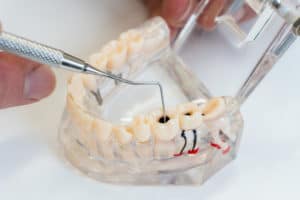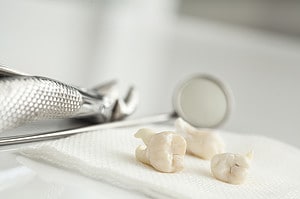Fillings are dental restorations that consist of a single or a combination of materials like metals, glass, and plastics used to repair or restore teeth.
A dental filling can assist in levelling up the tooth’s surface and enhance the jaw’s ability to bite and eat. Since it’s a type of restorative dental procedure, the process of a dental filling is performed to fix tiny fractures, holes, or cavities in the teeth. It can also considerably relieve the pain and sensitivity that many patients with tooth decay experience.
If your dentist recommends you a dental filling, you’re at the right place. Today, you’re going to learn about the steps involved in getting a dental filling.
Steps of a Dental Filling
The procedure of getting a dental filling includes the following steps:
- When you go to the dental office to get a filling, your dentist may give you local anaesthesia to numb the target area if they think it’s necessary.
- After that, your dentist will use a drill to remove the decay from the infected tooth. This drill, a.k.a. handpiece, consists of burs or metal cones that cut through the tooth’s enamel and clean out the decay. Burs come in a variety of sizes and shapes. Specific burs that are best for the size and location of your decay will be selected by your dentist to remove the decay.
- Your dentist will start to remove the tooth’s decay and unsupported enamel using a high-speed drill (that produces the familiar whining sound you hear at the dental office).
- Your dentist will then switch to a lower-speed drill once they reach the second layer of the tooth called dentin. The reason is that dentin is softer as compared to enamel.
- Once that is done, your dentist will shape the area to prepare it for the dental filling. To ensure the filling stays in place, your dentist will use a shaping technique best suited for the filling you’ll get.
- To protect the pulp of the tooth, your dentist may also put a liner or base (where the nerves are). Composite resin, zinc oxide, glass ionomer, eugenol, or another substance can be used to create the base or liner. These materials release fluoride to protect your teeth from further decay.
- In case of a bonded filling, your dentist will use an acid gel to etch or prepare your tooth. This etching or preparation makes tiny holes in the tooth’s enamel surface, ensuring that bonded filling bonds perfectly.
- Next, your dentist will place the composite filling material to fill the holes. In addition, a bonding material will also be used by your dentist, which bonds the filling to the tooth in two ways. It’s usually done with composite fillings, and it reduces the possibility of decay under the filling.
- Moreover, some kinds of fillings get hardened using a special light. In this case, your dentist will place a layer of filling material and stop several times to shine the special light that cures or hardens the filling material.
- In the end, once the filling is placed and bonded/hardened, your dentist will finally use burs to polish the treated tooth.
Dental Fillings in Aspendale Gardens, VIC, Australia
If you’re looking for the top dentist in Aspendale Gardens, VIC, Australia, for dental fillings, then Aspendale Gardens Dental Care is a perfect choice. We have a team of highly skilled dentists who can perform a range of restorative dentistry procedures, including dental fillings.
Contact us today to book your appointment.











